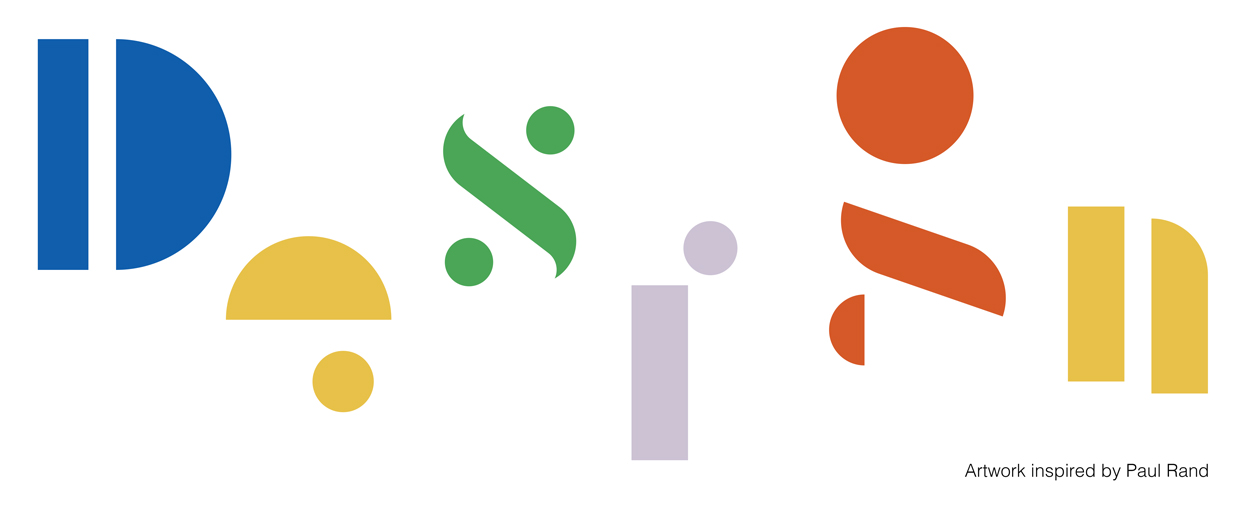Design: Essential to Human Happiness
Huffington Post
10/6/2015
The great Paul Rand, my teacher, once said in a critique: "The difference between a good painting and a great one is the composition." The arrangement of positive and negative space, and the placement of the elements, makes all the difference. Most people don't consciously realize what they perceive to be beautiful is actually a balance of great proportions, balanced in space.
For me, design encompasses the experiences of seeing, tasting, touching, hearing, smelling and feeling. If that wasn't enough, it also filters through everything we think, remember, and repeat. To put it simply, design is not only how something looks but how it works, and what it enables.
Design affects us at all levels of consciousness; it's what we wear, the tools we use, the food we eat, our home and work environments, our entertainment. It affects our decision-making in more ways than we consciously realize. Design influences behavior, encouraging people to develop preferences and familiarity. It creates brand loyalty. "Design is everything," said Paul Rand.
I consider myself a highly aesthetic person, and I use my awareness of this in my work. Successful designers are, by definition, businesspeople; but first and foremost they're creatives who operate according to a set of principles. We spend every day obsessed with design.
German industrial designer Dieter Rams is known not only for his iconic product designs for Braun, but also his ten principles of good design, which are much-cited by designers from all disciplines. (Rams had a sizable influence on a number of famous creators, including Apple's Jonathan Ive, who crafted the look of the iPhone and iPad.) In Rams' mind, good design:
If the designer succeeds at applying their principles to the project, the resulting design shouldn't stand out in a way that seems off-putting; rather, it should feel inevitable and natural--as if it could have been accomplished in no other way. Or as Rams himself once put it: "Good design is as little design as possible."
For me, design encompasses the experiences of seeing, tasting, touching, hearing, smelling and feeling. If that wasn't enough, it also filters through everything we think, remember, and repeat. To put it simply, design is not only how something looks but how it works, and what it enables.
Design affects us at all levels of consciousness; it's what we wear, the tools we use, the food we eat, our home and work environments, our entertainment. It affects our decision-making in more ways than we consciously realize. Design influences behavior, encouraging people to develop preferences and familiarity. It creates brand loyalty. "Design is everything," said Paul Rand.
I consider myself a highly aesthetic person, and I use my awareness of this in my work. Successful designers are, by definition, businesspeople; but first and foremost they're creatives who operate according to a set of principles. We spend every day obsessed with design.
German industrial designer Dieter Rams is known not only for his iconic product designs for Braun, but also his ten principles of good design, which are much-cited by designers from all disciplines. (Rams had a sizable influence on a number of famous creators, including Apple's Jonathan Ive, who crafted the look of the iPhone and iPad.) In Rams' mind, good design:
- Is innovative
- Makes products useful
- Is aesthetic
- Makes a product understandable
- Is unobtrusive
- Is honest
- Is long-lasting
- Is thorough down to the last detail
- Is environmentally friendly
- Is as little design as possible
If the designer succeeds at applying their principles to the project, the resulting design shouldn't stand out in a way that seems off-putting; rather, it should feel inevitable and natural--as if it could have been accomplished in no other way. Or as Rams himself once put it: "Good design is as little design as possible."
Why Design Is Essential to Human Happiness article by Janet Odgis, originally posted to the Huffington Post Blog see it here.



